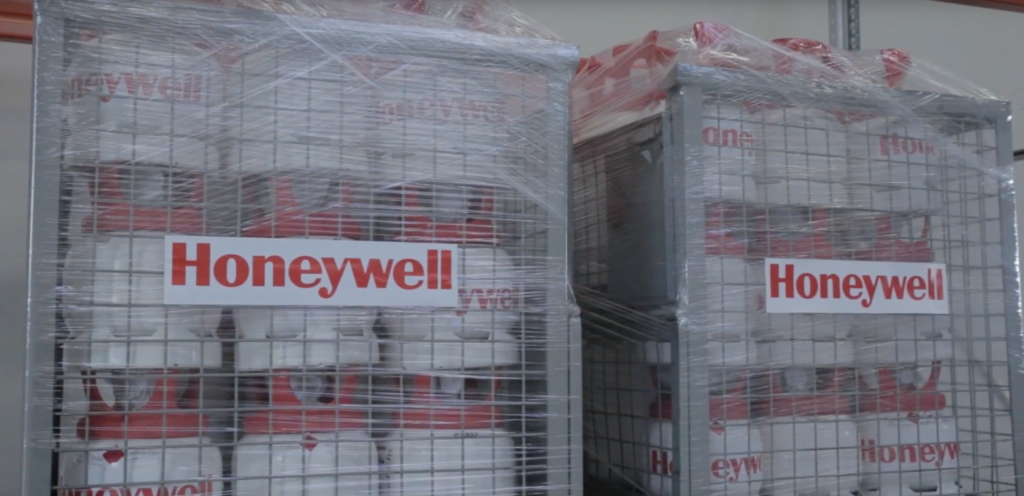NZ FINALLY GETS R1234YF
- PostedPublished 8 March 2017

AUTOMOTIVE repairers in New Zealand will soon be able to purchase cylinders of R1234yf refrigerant, which has just received importation approval from the Environmental Protection Agency (EPA).
This is good news as the situation was beginning to become desperate, with reports of R1234yf-equipped cars starting to enter the country as early as 2014 and the parallel import situation leading to accelerated uptake of R1234yf vehicles compared with neighbouring Australia.
Inevitably this caused the retrofitting of numerous R1234yf systems with R134a, in cases where the original refrigerant had leaked out.
EPA general manager of hazardous substances and new organisms Fiona Thomson-Carter said the low global warming potential (GWP) and zero ozone depletion rating of R1234yf would help New Zealand “continue delivering on its obligations under the Kyoto and Montreal protocols”.
Honeywell International applied to the NZ EPA for approval to import R1234yf in April 2016 and the approval allows for refrigerant blends containing R1234yf used for non-automotive applications to be brought in under the Compressed Gas Mixtures Group.
The application was brought to VASA’s attention by Refrigerant Recovery NZ director Clifton Madgwick at the future:gas refrigerant seminar in Auckland on August 10 2016.
VASA director Catherine Tocker made a submission to the EPA on the association’s behalf before the deadline of 29 August 2016.
In total 11 submissions were received, with some concerns raised but none opposing the R1234yf import application.
During the application process, the EPA considered human health, environmental and economic factors and sought additional feedback from the NZ Fire Service and Worksafe, but only Worksafe responded.
A Staff Assessment Report of the R1234yf import application was published by the EPA on 29 November 2016, ahead of a hearing that took place in Wellington on 15 December 2016 and was attended by Catherine Tocker, who made presentations on behalf of VASA and CoolCar.
In summary the VASA submission delivered by Catherine Tocker was that:
• OEMs adopted R1234yf to meet international requirements to reduce greenhouse gas emissions
• Cars with R1234yf have been in NZ for several years including NZ-new models since 2014
• Prompt approval of R1234yf was sought because lack of availability was presenting problems for service and repair
• No OEM endorses the use of any refrigerant other than that used at manufacture, except the retrofitting of R12 systems to R134a when following protocols
• The ASHRAE A2L mild flammability classification for R1234yf provides a useful distinction from highly flammable A3 LPG, propane and iso-butane.
• A new AS/NZ standard recently recognised the distinction but the Hazardous Substances and New Organisms (HSNO) Act takes precedence, meaning only the ‘highly flammable’ chemical class 2.1.1A applies to management of R1234yf, but that this must not be taken to mean that other non-OEM approved, highly flammable refrigerants should be considered acceptable in automotive applications in NZ and nor should R1234yf systems be retrofitted to any other refrigerant
• Internationally-referenced SAE standards that prescribe R1234yf system design, component manufacture, acceptable leakage rates, service procedures, equipment requirements need to be more prominent for automotive uses of R1234yf for the safety of all participants, including consumers.

• While there is an increased risk if R1234yf is introduced into systems not designed for it we believe, and studies show, the low flammability of this refrigerant can be safely managed in workshops with proper practices, equipment and training, however this is not the universal approach to vehicle air conditioning and there are many people re-gassing systems without the proper processes or will to keep people safe.
• When any flammable, approved refrigerant is used on an incorrectly diagnosed or repaired car this places a greater risk to the public and industry than R134a.
• The high introductory price of R1234yf and increasing price of R134a as desired under the NZ Emissions Trading Scheme (NZETS) may make price-sensitive individuals look for alternatives as per the Australian experience, with sometimes disastrous results.
• Varying the default HSNO control thresholds for this substance to 50kg, AS PROPOSED to match highly flammable compressed gases such as LPG and iso-butane would only exacerbate the risk that R1234yf is interpreted as similar to these substances in risk profile and could lead to misleading sales practices incorrectly convincing people that R1234yf can be suitably replaced with highly flammable iso-butane/ propane blends or LPG for less money and similar risk. This had not been satisfactorily addressed by the proposed controls.
• Worksafe’s proposed reliance on Health and Safety in Work Act 2016 (HSWA) does not provide sufficient motivation to many operators to be properly qualified or trained based on existing work practices and lack of compliance with consumer protection laws, the Ozone Layer Protection Act (OLPA), Climate Change Response Act (CCRA) and HSNO, as it relates to in-use refrigerants.
• There is no protection for automotive technicians against non-approved use of HFO refrigerants such as R1234yf as the Electrical Safety Regulations are not applicable to our situation
• The long-term environmental impacts of R1234yf are unknown and although the application says the substance is thought to have a very short half-life and harmless breakdown products, initial advice relating to CFC and HFC refrigerants that their release was environmentally acceptable was subsequently found incorrect, resulting in laws and taxes to reduce emissions that are taking decades to address these negative effects
• R1234yf can be recycled, re-used and ultimately destroyed but the disposal of recovered end-of-life refrigerant requires an income stream and no NZETS credits come back to the automotive sector when refrigerant is destroyed
• Poor work practices result in preventable refrigerant emissions and the lack of enforcement is incongruous with the expensive NZETS and introduction of newer low GWP refrigerants when no genuine action is taken to prevent environmental damage
During the hearing, VASA proposed:
• Mandatory recovery of R1234yf and all other synthetic refrigerants, providing a need for a product stewardship scheme like the existing recovery levy on ODS and SGG refrigerants
• Stronger enforcement of the OLPA, CCRA, HSNO including the requirement for an Approved Fillers license so that poor practices by unskilled, ill-equipped individuals may be curtailed with a positive flow-on effect to new refrigerant systems when handled with a similar level of care and responsibility.
• Mandatory Approved Fillers Certificates replacing the existing voluntary scheme for the purchase of all refrigerants, in the absence of any other regulatory mechanism
• A specific exclusion on the use of flammable refrigerants in equipment for which they are not designed
• That the committee take steps to engage relevant parties where considerations raised in submissions were outside of the scope of the R1234yf import application
In the EPA decision, Worksafe clarified that the HSWA and associated regulations require people working with flammable gases to have received appropriate training and require that systems are properly designed and used so as not to cause health and safety risks.
Worksafe advised that additional controls requiring a specific Approved Filler Certificate for refrigerants are not necessary, as opposed to an Approved Fillers Certificate applicable to compressed gases generally that was suggested by some submitters.
A number of controls were applied to the approval, including the reduction to a 50kg control threshold at which a Handlers Certificate and related activities would be required, to maintain consistency with other flammable compressed gases except during transport where the Land Transport Rule applies to properly trained and qualified transport operators.
Above 50kg, there is a special requirement for site information, labelling, storage and emergency plans.
The controls also included requirements for additional labelling about asphyxiation and cryogenic risks, the need for adequate ventilation and the use of personal protective equipment to mitigate these effects.
Dr Thomson-Carter said the labelling requirements and handler training requirements meant “any risk to human health or the environment would be low”.
- CategoriesIn SightGlass
- TagsSightGlass News Issue 9

